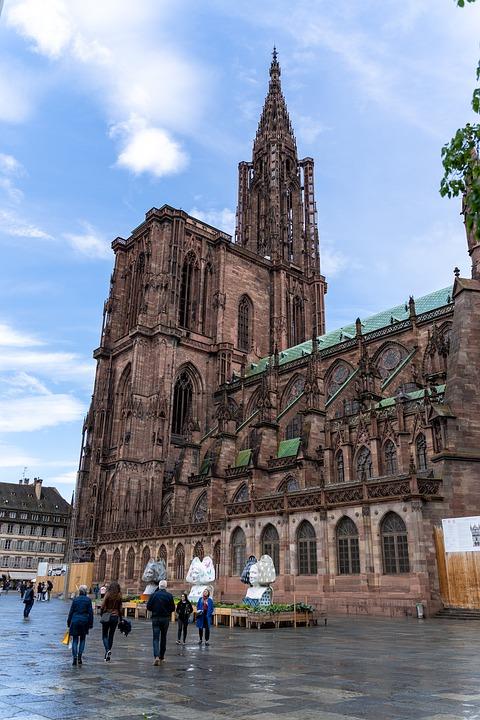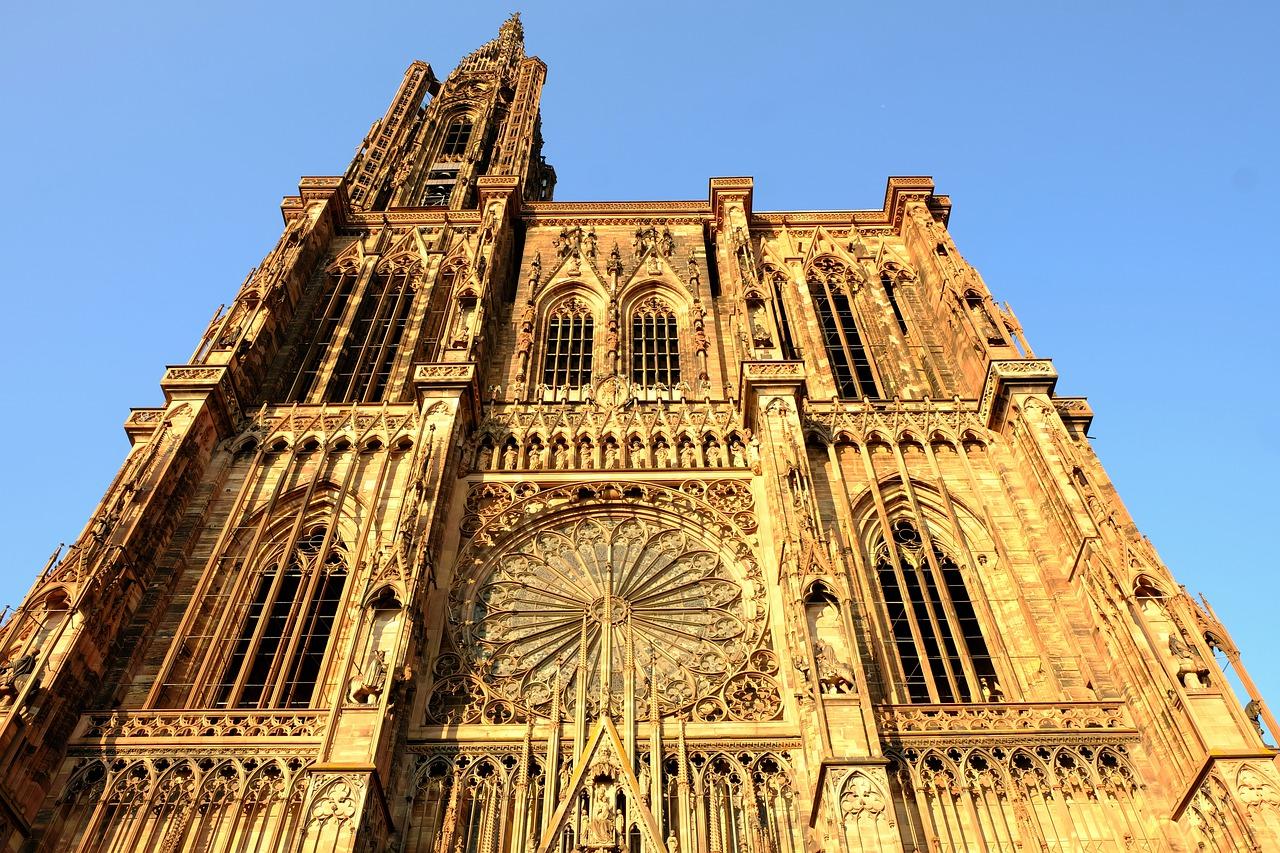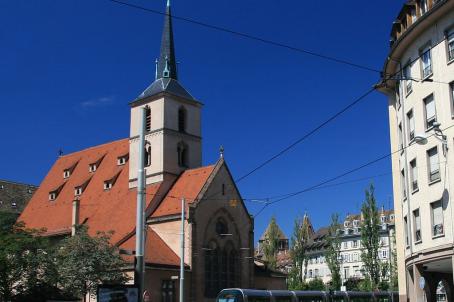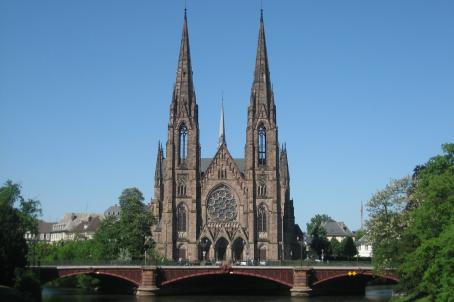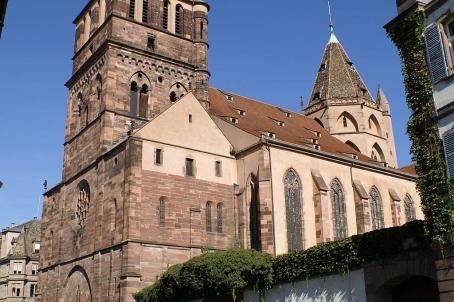Strasbourg Cathedral
Notre-Dame de Strasbourg cathedral was founded in 1015 on the remains of an old cathedral. It is today the second most visited cathedral in France, after Notre-Dame de Paris, eight and a half million tourists a year. Since 1988, it is a UNESCO heritage site. From its construction until the 19th century, the cathedral was the highest human construction in the world. The recognisable silhouette of the cathedral looms from the Strasbourg countryside and even from the other side of the Rhine, on the Baden plain.
About this building
The cathedral is built on an ancient Roman sanctuary dedicated to the god Mars. Later, mainly under Charlemagne, several churches were built but all were destroyed in fires. Over the centuries the cathedral grew; the bishop who founded today's cathedral wanted it to be more beautiful than Basel's. The construction of the cathedral began in 1176 and was completed in 1439. Combining the Romanesque style of its apse and its transept with the Gothic style of its nave and its facade, the church's high spire rises to 143 meters. With a Latin cross plan, the Church is also characterised by long and large vessels of the nave.
